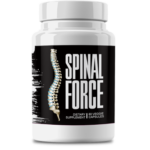This Village-Made Chinese Pain Reliever Eliminates Back And Joint Pain!
Living with Ankle Arthritis: Diet and Lifestyle Changes for Better Health

Understanding Ankle Arthritis
What is Ankle Arthritis?
Ankle arthritis is a degenerative joint disease that affects the ankle, causing pain, stiffness, and reduced mobility. It occurs when the cartilage that cushions the ankle joint wears away, leading to bone-on-bone friction. This condition can result from various factors, including injury, age, or underlying medical conditions such as rheumatoid arthritis. Living with ankle arthritis can be challenging, but with proper management, individuals can improve their quality of life and maintain an active lifestyle.
Common Symptoms of Ankle Arthritis
Recognizing the symptoms of ankle arthritis is crucial for early diagnosis and effective treatment. Common symptoms include pain and tenderness in the ankle, swelling, stiffness, and a decreased range of motion. Individuals may also experience a grinding sensation or hear a clicking sound when moving the ankle. These symptoms can vary in severity and may worsen over time if not addressed. If you notice any of these signs, it is essential to consult a healthcare professional for a comprehensive evaluation.
Diagnosing Ankle Arthritis
Diagnosing ankle arthritis typically involves a combination of medical history, physical examination, and imaging tests. During the medical history review, your doctor will ask about your symptoms, any previous injuries, and family history of arthritis. A physical examination will assess the range of motion, swelling, and tenderness in the ankle. Imaging tests, such as X-rays, MRI, or CT scans, can provide detailed images of the joint and help confirm the diagnosis. Early diagnosis is key to implementing effective treatment strategies and managing the condition effectively.
The Impact of Diet on Ankle Arthritis
Anti-inflammatory Foods to Include
Diet plays a significant role in managing ankle arthritis, particularly through the inclusion of anti-inflammatory foods. These foods can help reduce inflammation and alleviate symptoms. Some beneficial foods include fatty fish like salmon and mackerel, rich in omega-3 fatty acids, which have anti-inflammatory properties. Additionally, fruits and vegetables such as berries, spinach, and kale are packed with antioxidants that combat inflammation. Incorporating these foods into your daily diet can support joint health and improve overall well-being.
Foods to Avoid for Better Joint Health
While certain foods can help manage ankle arthritis, others may exacerbate inflammation and worsen symptoms. Foods high in processed sugars, refined carbohydrates, and trans fats should be avoided. These include sugary snacks, white bread, and fried foods. Additionally, excessive consumption of red meat and dairy products can contribute to inflammation. Opting for healthier alternatives and maintaining a balanced diet can significantly impact your joint health and overall quality of life when living with ankle arthritis.
Importance of Hydration
Staying hydrated is essential for maintaining joint health and managing ankle arthritis. Water helps keep the cartilage in your joints hydrated and supports the production of synovial fluid, which lubricates the joints. Dehydration can lead to increased joint pain and stiffness. Aim to drink at least eight glasses of water a day, and consider incorporating hydrating foods such as cucumbers, watermelon, and oranges into your diet. Proper hydration can help reduce inflammation and improve mobility, making it a crucial component of managing ankle arthritis.
Exercise and Mobility Tips for Living with Ankle Arthritis
Low-Impact Exercises
Engaging in regular physical activity is vital for managing ankle arthritis, but it is important to choose low-impact exercises that do not put excessive strain on the joints. Activities such as swimming, cycling, and walking are excellent options. These exercises help maintain joint flexibility, strengthen muscles, and improve cardiovascular health without causing additional stress on the ankles. Incorporating these activities into your routine can enhance mobility and reduce pain, making it easier to live with ankle arthritis.
Stretching Routines
Stretching is another key component of managing ankle arthritis. Regular stretching routines can help improve flexibility, reduce stiffness, and alleviate pain. Focus on stretches that target the ankle, calf, and surrounding muscles. Gentle yoga and tai chi can also be beneficial, as they incorporate stretching and balance exercises. Consistency is crucial, so aim to incorporate stretching into your daily routine. Over time, you may notice improved range of motion and reduced discomfort, enhancing your ability to manage ankle arthritis effectively.
The Role of Physical Therapy
Physical therapy can be an invaluable resource for individuals living with ankle arthritis. A physical therapist can design a personalized exercise and stretching program tailored to your specific needs and limitations. They can also provide guidance on proper techniques to avoid injury and maximize benefits. Physical therapy sessions may include manual therapy, ultrasound, and other modalities to reduce pain and improve joint function. Regular physical therapy can significantly enhance your quality of life by helping you manage symptoms and maintain mobility.
Weight Management and Ankle Arthritis
Benefits of Weight Loss
Maintaining a healthy weight is crucial for individuals with ankle arthritis. Excess weight puts additional stress on the joints, exacerbating pain and inflammation. Losing even a small amount of weight can significantly reduce the pressure on your ankles and improve your symptoms. Weight loss can also enhance overall health, reducing the risk of other chronic conditions such as heart disease and diabetes. By adopting a balanced diet and engaging in regular physical activity, you can achieve and maintain a healthy weight, making it easier to live with ankle arthritis.
Healthy Weight Loss Strategies
When it comes to weight loss, it is important to focus on sustainable and healthy strategies. Aim for gradual weight loss by creating a calorie deficit through balanced eating and regular exercise. Incorporate a variety of nutrient-dense foods, including lean proteins, whole grains, fruits, and vegetables, into your diet. Avoid fad diets or extreme calorie restrictions, as they can be detrimental to your health. Consulting with a registered dietitian or nutritionist can provide personalized guidance and support, helping you achieve your weight loss goals safely and effectively.
Monitoring Progress
Tracking your progress is essential for staying motivated and ensuring that your weight loss efforts are effective. Keep a journal to record your daily food intake, exercise routines, and any changes in your symptoms. Regularly weigh yourself and take body measurements to monitor changes. Celebrate small milestones and stay positive throughout your journey. If you encounter challenges or plateaus, seek support from healthcare professionals or support groups. Monitoring your progress can help you stay on track and make necessary adjustments to your weight loss plan, ultimately improving your ability to manage ankle arthritis.
Pain Management and Relief Techniques
Over-the-Counter Medications
Over-the-counter (OTC) medications can provide temporary relief from the pain and inflammation associated with ankle arthritis. Nonsteroidal anti-inflammatory drugs (NSAIDs) such as ibuprofen and naproxen are commonly used to reduce pain and swelling. Acetaminophen can also be effective for pain relief. However, it is important to use these medications as directed and consult with a healthcare professional before starting any new medication regimen. OTC medications can be a valuable part of your pain management strategy, but they should be used in conjunction with other lifestyle changes for optimal results.
Natural Pain Relief Methods
In addition to OTC medications, there are several natural pain relief methods that can help manage ankle arthritis symptoms. Applying topical creams or gels containing ingredients like menthol or capsaicin can provide localized relief. Herbal supplements such as turmeric, ginger, and omega-3 fatty acids have anti-inflammatory properties and may help reduce pain. Acupuncture and massage therapy are other alternative treatments that can alleviate pain and improve joint function. Exploring these natural methods can offer additional options for managing pain and enhancing your overall well-being.
The Role of Heat and Cold Therapy
Heat and cold therapy are effective techniques for managing pain and inflammation associated with ankle arthritis. Applying a heating pad or warm towel to the affected area can help relax muscles, improve blood flow, and reduce stiffness. Cold therapy, such as using an ice pack or a cold compress, can numb the area, reduce swelling, and alleviate pain. Alternating between heat and cold therapy can provide comprehensive relief. It is important to use these therapies safely and consult with a healthcare professional for personalized recommendations based on your specific condition.
Lifestyle Modifications for Improved Quality of Life
Choosing the Right Footwear
Wearing appropriate footwear is essential for individuals living with ankle arthritis. Shoes that provide good arch support, cushioning, and stability can help reduce stress on the joints and improve comfort. Avoid high heels and opt for shoes with a low heel or flat sole. Custom orthotics or insoles can provide additional support and alleviate pressure on the ankles. When selecting footwear, prioritize comfort and functionality over style. Investing in quality shoes can make a significant difference in managing ankle arthritis and enhancing your mobility and overall quality of life.
Home Modifications for Safety
Making certain modifications to your home environment can enhance safety and reduce the risk of falls for individuals with ankle arthritis. Install handrails on staircases and in bathrooms to provide support and stability. Remove tripping hazards such as loose rugs and clutter from walkways. Consider using assistive devices such as a cane or walker if needed. Ensure that your living space is well-lit to improve visibility. These modifications can create a safer and more accessible environment, allowing you to navigate your home with greater ease and confidence while living with ankle arthritis.
Ergonomic Adjustments at Work
For individuals with ankle arthritis, making ergonomic adjustments at work can help reduce strain on the joints and improve comfort. Ensure that your workstation is set up correctly, with your chair, desk, and computer monitor at appropriate heights. Use a footrest to support your feet and reduce pressure on your ankles. Take regular breaks to stand, stretch, and move around. If your job requires prolonged standing, consider using anti-fatigue mats to reduce discomfort. These ergonomic adjustments can make a significant difference in managing ankle arthritis and maintaining productivity and well-being at work.
Emotional and Mental Well-being
Coping with Chronic Pain
Living with chronic pain from ankle arthritis can take a toll on your emotional and mental well-being. It is important to develop coping strategies to manage the psychological impact of the condition. Practice relaxation techniques such as deep breathing, meditation, and progressive muscle relaxation to reduce stress and promote a sense of calm. Engage in activities that bring you joy and distract you from pain. Seek support from friends, family, or a therapist to talk about your feelings and concerns. Prioritizing your emotional health is essential for maintaining a positive outlook and improving your overall quality of life.
Building a Support Network
Having a strong support network can make a significant difference in managing ankle arthritis. Surround yourself with people who understand your condition and can offer encouragement and practical assistance. Join support groups or online communities where you can connect with others who are going through similar experiences. Sharing your challenges and successes with others can provide a sense of belonging and reduce feelings of isolation. Building a support network can help you stay motivated, receive valuable advice, and enhance your ability to cope with the demands of living with ankle arthritis.
Mindfulness and Stress Management
Mindfulness and stress management techniques can be powerful tools for individuals living with ankle arthritis. Mindfulness practices, such as mindfulness meditation and mindful breathing, can help you stay present and manage pain more effectively. Reducing stress is essential, as stress can exacerbate inflammation and worsen symptoms. Engage in activities that promote relaxation and well-being, such as spending time in nature, practicing yoga, or engaging in hobbies you enjoy. Incorporating mindfulness and stress management techniques into your daily routine can improve your mental and emotional resilience, making it easier to navigate the challenges of ankle arthritis.
Professional Help and Resources
When to See a Specialist
If you are experiencing persistent pain, swelling, or limited mobility in your ankle, it is important to seek professional help. A specialist, such as a rheumatologist or orthopedic surgeon, can provide a comprehensive evaluation and develop a personalized treatment plan. They may recommend medications, physical therapy, or other interventions to manage your symptoms. Early intervention can prevent the progression of ankle arthritis and improve your long-term outcomes. Do not hesitate to seek professional help if your symptoms are impacting your daily life and overall well-being.
Support Groups and Communities
Connecting with support groups and communities can provide valuable resources and emotional support for individuals living with ankle arthritis. These groups offer a platform to share experiences, exchange information, and receive encouragement from others who understand your challenges. Online forums, social media groups, and local arthritis organizations can help you find support and stay informed about the latest treatments and management strategies. Participating in support groups can empower you to take control of your condition and improve your quality of life by learning from others and building a sense of community.
Educational Resources and Further Reading
Educating yourself about ankle arthritis is essential for effective self-management. Numerous educational resources are available, including books, articles, and reputable websites. Organizations such as the Arthritis Foundation and the American College of Rheumatology offer comprehensive information on ankle arthritis, treatment options, and lifestyle modifications. Staying informed about your condition can help you make informed decisions about your health and treatment plan. Take advantage of these resources to deepen your understanding of ankle arthritis and explore strategies to improve your overall well-being and quality of life.








